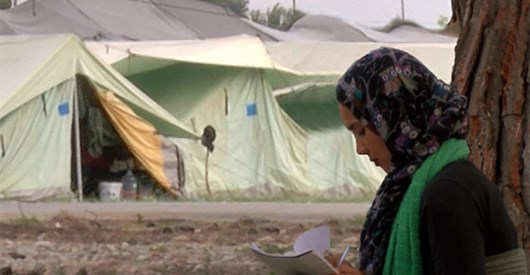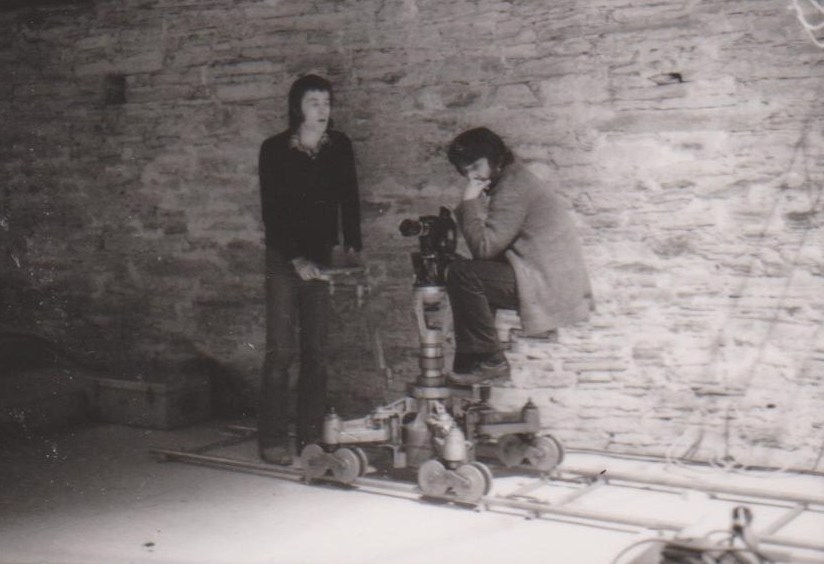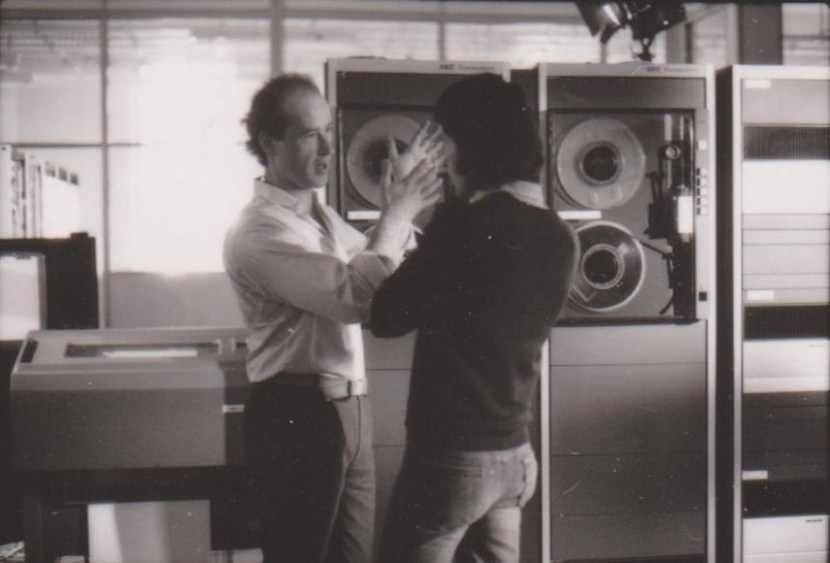
Photo © 1984 Derek Jarman
Wednesday 29 March
Birkbeck Cinema, 43 Gordon Square, London, WC1H 0PD
1:00–6:00 | [Book here]
What does it say about British identity that from as early as the 13th century foreign states have shared a single Anglophone slur to describe British double-dealings overseas? Perfidious Albion: the name for Britain when its government operates dishonourably, is treacherous, or betrays a promise.
The promise of British identity has been much discussed in the last twelve months. Two versions are in competition. Britain in the world, outward looking and open. Britain as an island nation, insular, self-interested, maybe closed. In the aftermath of the Brexit vote, as Britain floats off the coast of mainland Europe and dreams its future, this programme looks at how essay filmmakers have analysed the promise represented by modern Britain and estimated to what degree the country lives up to its perfidious reputation. Curated by Catherine Grant and Sarah Wood, it features two recent works by Wood, alongside works by Derek Jarman, Humphrey Jennings, Margaret Tait, Isaac Julien and the Sankofa Film and Video Collective, and Cordelia Swann.
In collaboration with the School of Media, Film and Music, University of Sussex
1:00-3:00
The Last of England, Derek Jarman, UK, 1984, 35mm, 87 mins
3:30-6:00
The Dim Little Island, Humphrey Jennings, UK 1949, 35mm, 10 mins
Colour Poems, Margaret Tait, UK 1974, DVD, 11 mins
Territories, Isaac Julien/Sankofa, UK 1985, 16mm, 25 mins TBC
Perfidia, Cordelia Swann, UK 2002, digital video, 13 mins
Boat People, Sarah Wood, UK 2016, digital video, 22 mins
Azure, Sarah Wood, UK 2017, digital video loop, 7 mins, text by Ali Smith.
The Last of England, Derek Jarman, UK 1984, 35mm, 87 mins
England in the future: a nightmarish journey through a dark landscape of totalitarianism and despair.
“In The Last of England, Derek Jarman’s memories, thoughts and fantasies are assembled in a collage of styles (quasi-documentary chronicle, home movies and video), to vent his fury at Thatcher’s England. The use of dream-like imagery, superimpositions and different colour hues express Jarman’s nostalgic yearning for the past, and the film has been compared to Humphrey Jennings’ poetic documentary Listen to Britain (1941), which hymned wartime Britain.” (Kamila Kuc, BFI Screenonline)
The Dim Little Island, Humphrey Jennings, UK 1949, 35mm, 10 mins
“Humphrey Jennings’s latest film is in effect an anthology of four meditations on the present state of England. These are contributed by an artist (Osbert Lancaster), a naturalist (James Fisher), an industrialist (John Ormston), and a composer (Vaughan Williams). “Ichabod, Ichabod”, Lancaster remarks in the opening sequence, “our glory is departed.” The little island is growing dim; looking at it we feel rather like the émigrés in Ford Madox Brown’s picture The Last of England, sad but resigned.” (Monthly Film Bulletin)
Colour Poems, Margaret Tait, UK 1974, DVD, 11 mins
“Nine linked short films. Memory, chance observation, and the subsuming of one in the other. The titles within the film are: Numen of the Boughs, Old Boots, Speed Bonny Boat, Lapping Water, Insence, Aha, Brave New World, Things, Terra Firma.” (Margaret Tait)
Territories, Isaac Julien/Sankofa, UK 1985, 16mm, 25 mins
“Sankofa’s Territories looks at the Notting Hill Carnival and the 1976 riots. Juxtaposing original footage with archival news reports, Isaac Julien films the carnival as a subversive site for resistance in Afro-Caribbean culture, in direct opposition to mainstream white British society and an increasingly hostile police patrol.” (Cinema Project)
Perfidia, Cordelia Swann, UK 2002, digital video, 13 mins
“A contemporary fable, set in the streets, parks, edifices and firmaments of Paddington and West London, about the day to day life of a woman named Perfidia and her neighbours. Featuring jet trails, a canary, a student, an archbishop, Marlene Dietrich, and the London Fire Brigade.” (Cordelia Swann)
“‘Perfidia’…is also the name of a woman with no particular faith or allegiance. As the soundtrack reminds us she is, like Marlene Dietrich in the film ‘Morocco’, a ‘suicide’, a ‘one way ticket’ who has stepped off the ship never to be seen again. In Swann’s film, she becomes an ‘itinerant and a tourist’, immersing herself in a kaleidoscope of London sights and sounds which manage to allude to a multitude of experiences and beliefs but adhere to none in particular.” (Sotiris Kyriacou, Luxonline)
Boat People, Sarah Wood, UK 2016, digital video, 22 mins
Homelessness is coming to be the destiny of the world’, suggested Martin Heidegger in 1946, in the immediate aftermath of the mass movement of people created by WWII. In 1946, this displacement was a shocking legacy. Sixty years on, with the escalating movement of people escaping conflict and environmental catastrophe across the world, has Heidegger’s prediction come true? Has displacement become the norm rather than the exception?
Boat People is an essay film that explores this question. Taking as its starting point the historic version of Britain as a seafaring nation the film counterpoints the surety of this assertion of identity with the contingency of movement. Boat People also questions the role the moving image itself plays in the representation of human movement and the migration of ideas. Just as the invention of the telescopic lens brought near and far together for the very first time, Boat People is about the way in the twenty-first century the near and far are mediated and transformed by the new ‘perception accelerator’, the digital image.
Azure, Sarah Wood, UK 2017, digital video loop, 7 mins, text by Ali Smith.
Azure is the colour of the sky on a clear summer’s day. Azure is a colour that suggests openness, ease, possibility. Azure is the name of the card given to the people who arrive in Britain seeking asylum. This short essay film accompanies Boat People in a questioning of the meaning of hospitality.








